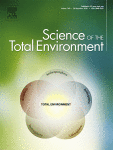Ver ítem
- xmlui.general.dspace_homeCentros e Institutos de InvestigaciónCICVyA. Centro de Investigación en Ciencias Veterinarias y AgronómicasInstituto de PatobiologíaArtículos científicosxmlui.ArtifactBrowser.ItemViewer.trail
- Inicio
- Centros e Institutos de Investigación
- CICVyA. Centro de Investigación en Ciencias Veterinarias y Agronómicas
- Instituto de Patobiología
- Artículos científicos
- Ver ítem
Improving the accuracy of beef cattle methane inventories in Latin America and Caribbean countries
Resumen
On-farm methane (CH4) emissions need to be estimated accurately so that the mitigation effect of recommended practices can be accounted for. In the present study prediction equations for enteric CH4 have been developed in lieu of expensive animal measurement approaches. Our objectives were to: (1) compile a dataset from individual beef cattle data for the Latin America and Caribbean (LAC) region; (2) determine main predictors of CH4 emission variables;
[ver mas...]
On-farm methane (CH4) emissions need to be estimated accurately so that the mitigation effect of recommended practices can be accounted for. In the present study prediction equations for enteric CH4 have been developed in lieu of expensive animal measurement approaches. Our objectives were to: (1) compile a dataset from individual beef cattle data for the Latin America and Caribbean (LAC) region; (2) determine main predictors of CH4 emission variables; (3) develop and cross-validate prediction models according to dietary forage content (DFC); and (4) compare the predictive ability of these newly-developed models with extant equations reported in literature, including those currently used for CH4 inventories in LAC countries. After outlier's screening, 1100 beef cattle observations from 55 studies were kept in the final dataset (∼ 50 % of the original dataset). Mixed-effects models were fitted with a random effect of study. The whole dataset was split according to DFC into a subset for all-forage (DFC = 100 %), high-forage (94 % ≥ DFC ≥ 54 %), and low-forage (50 % ≥ DFC) diets. Feed intake and average daily gain (ADG) were the main predictors of CH4 emission (g d−1), whereas this was feeding level [dry matter intake (DMI) as % of body weight] for CH4 yield (g kg−1 DMI). The newly-developed models were more accurate than IPCC Tier 2 equations for all subsets. Simple and multiple regression models including ADG were accurate and a feasible option to predict CH4 emission when data on feed intake are not available. Methane yield was not well predicted by any extant equation in contrast to the newly-developed models. The present study delivered new models that may be alternatives for the IPCC Tier 2 equations to improve CH4 prediction for beef cattle in inventories of LAC countries based either on more or less readily available data.
[Cerrar]

Autor
Congio, Guilhermo F.S.;
Bannink, André;
Mayorga, Olga L.;
Rodrigues, João P. P.;
Bougouin, Adeline;
Kebreab, Ermias;
Carvalho, Paulo C.F.;
Berchielli, Telma T.;
Mercadante, Maria E.Z.;
Valadares-Filho, Sebastião C.;
Borges, Ana L. C.C.;
Berndt, Alexandre;
Rodrigues, Paulo H.M.;
Ku-Vera, Juan C.;
Molina-Botero, Isabel C.;
Arango, Jacobo;
Reis, Ricardo A.;
Posada-Ochoa, Sandra L.;
Tomich, Thierry R.;
Castelán-Ortega, Octavio A.;
Marcondes, Marcos I.;
Gómez, Carlos;
Ribeiro-Filho, Henrique M.N.;
Gere, Jose Ignacio;
Ariza-Nieto, Claudia;
Giraldo, Luis A.;
Gonda, Horacio;
Ceron Cucchi, Maria Esperanza;
Hernandez, Olegario;
Ricci, Patricia;
Hristov, Alexander N.;
Fuente
Science of the Total Environment 856 (2) : 159128 (Enero 2023)
Fecha
2023-01
Editorial
Elsevier
ISSN
1879-1026
Formato
pdf
Tipo de documento
artículo
Palabras Claves
Derechos de acceso
Restringido
 Excepto donde se diga explicitamente, este item se publica bajo la siguiente descripción: Creative Commons Attribution-NonCommercial-ShareAlike 2.5 Unported (CC BY-NC-SA 2.5)
Excepto donde se diga explicitamente, este item se publica bajo la siguiente descripción: Creative Commons Attribution-NonCommercial-ShareAlike 2.5 Unported (CC BY-NC-SA 2.5)


